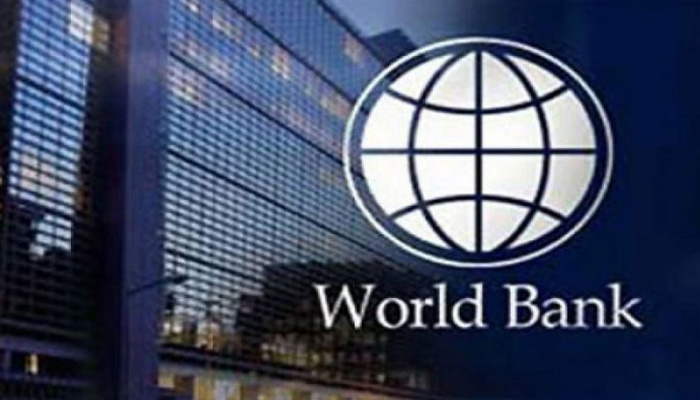Technology usage improves service delivery in Pakistan: WB
LAHORE: The World Bank on Monday said technology-enabled measures helped Pakistan tackle the key service delivery challenges facing its public sector organisations.
“Application of smartphones supported a broader operational change in Pakistan,” the World Bank said in a report titled, ‘Improving Public Sector Performance through Innovation and Inter-agency Coordination’. The World Bank, citing reforms in the Punjab, said the province introduced a citizen feedback program to monitor the performance of civil servants, stymy petty corruption, and improve public services.
“Starting from a small pilot in one of its districts, the province now operates a wide-ranging monitoring program,” the bank said.
“The national passport office has since taken the approach on board and attributes citizen feedback to helping them slash the processing time for passports from three weeks to ten days.”
All the customers of the Pakistan Passport office – averaging around 15,000 per day across more than 100 offices – receive a text message from the Director General checking if they faced any bribery or other problems.
The World Bank said inexpensive smartphones have been used in the Punjab to monitor the performance of officials in several sectors.
“The smartphones have helped to significantly reduce absenteeism, improve the quality and timeliness of facility inspections, and enhance spatial coverage,” it added in the inaugural report that aims to offer a fresh look at how developing countries are overcoming persistent problems in public sector management.
The World Bank said a district in Sindh has also implemented biometric monitoring systems to help reduce employee absenteeism in its 45,000 schools. “In other parts of Pakistan, reforms have been taken to strengthen merit-based recruitment of teachers by tightening procedures for entrance examinations.”
Khyber Pakhtunkhwa’s government is also taking a legislation initiative to create new norms for millions of day-to-day state-citizen interactions, inducing higher citizen expectations, and creating new standards of behaviour for government servants. The World Bank said engaging citizens to get critical feedback on public services can help governments improve service delivery and reduce petty corruption.
The Punjab government has scaled up a small pilot in one of its districts to create a wide-ranging monitoring program that leverages the ubiquity of cellphones to proactively solicit feedback from users of public services. “The Punjab Information Technology Board (PITB), the government’s technology agency, turns that information into easily digestible quantitative and qualitative data, and provides that information to senior officials who can hold frontline civil servants accountable for their performance,” the bank said.
“The smartphone revolution in Punjab showed how a government could easily improve data collection and service delivery by using cheap and easy-to-use smartphone applications.”
The bank said the improved performance of public employees resulted in better outcomes for citizens, particularly in the highly successful vaccine program intervention. When the vaccine application was first launched in October 2014, vaccinators reached just 25 percent of the polygons the PITB used to measure geographic coverage across the province. In May 2016, that figure had increased to 88 percent, as a result of the increased attendance and coverage, the percentage of fully immunised children under 20 months rose from 62 percent in 2014 to 81 percent in 2016, and 95 percent of children were fully vaccinated against polio.
“The increased vaccination coverage helped reduce the risk of contracting polio. After having 7 polio cases in 2013 and 5 in 2014, Punjab had only 2 cases in 2015 and 0 in 2016,” the bank said.
The World Bank said creating incentives for civil servants to show up to work and perform well at their jobs was a key goal of many of the PITB’s reforms. “By increasing monitoring of vaccinators, for example, first by monitoring attendance and then by scrutinising geographic coverage, the Punjab government was able to quickly improve the percentage of children receiving vaccinations across the province.”
-
 Mississippi Postal Worker Arrested After Complaints Of Marijuana Odour In Letters
Mississippi Postal Worker Arrested After Complaints Of Marijuana Odour In Letters -
 Canada, China Lock Initial Trade Deal On ‘EV,Canola’ To Strengthen Ties: What To Expect Next?
Canada, China Lock Initial Trade Deal On ‘EV,Canola’ To Strengthen Ties: What To Expect Next? -
 Melissa Leo On Euphoria Of Winning An Oscar Vs It's Impact On Career
Melissa Leo On Euphoria Of Winning An Oscar Vs It's Impact On Career -
 Meghan Markle, Prince Harry Express 'hope' In Latest Major Statement
Meghan Markle, Prince Harry Express 'hope' In Latest Major Statement -
 Sophie Turner Backs Archie Madekwe As BAFTA Announces Nominees
Sophie Turner Backs Archie Madekwe As BAFTA Announces Nominees -
 Jason Momoa Cherishes Hosting Ozzy Osbourne's Final Gig Ahead Of His Death
Jason Momoa Cherishes Hosting Ozzy Osbourne's Final Gig Ahead Of His Death -
 Real Reason Timothee Chalamet Thanked Kylie Jenner At Awards Revealed
Real Reason Timothee Chalamet Thanked Kylie Jenner At Awards Revealed -
 Will King Charles Attend Funeral Of Prince Philip's First Cousin, Princess Irene?
Will King Charles Attend Funeral Of Prince Philip's First Cousin, Princess Irene? -
 'Furious' Prince William Wants Andrew As Far Away As Possible
'Furious' Prince William Wants Andrew As Far Away As Possible -
 Blood Moon: When And Where To Watch In 2026
Blood Moon: When And Where To Watch In 2026 -
 Apple Foldable IPhone Tipped For 2026 Launch With A20 Pro Chip And C2 Modem
Apple Foldable IPhone Tipped For 2026 Launch With A20 Pro Chip And C2 Modem -
 Meghan Lends Credence To Reports Of Rift With Kim Kardashian On Chicago's Birthday
Meghan Lends Credence To Reports Of Rift With Kim Kardashian On Chicago's Birthday -
 Florida Woman’s Alleged Bid To Bribe Police Ends In Unexpected Discovery
Florida Woman’s Alleged Bid To Bribe Police Ends In Unexpected Discovery -
 James Van Der Beek Strongly Opposes The Idea Of New Year In Winter
James Van Der Beek Strongly Opposes The Idea Of New Year In Winter -
 Elon Musk’s Starlink Rival Eutelsat Partners With MaiaSpace For Satellite Launches
Elon Musk’s Starlink Rival Eutelsat Partners With MaiaSpace For Satellite Launches -
 Fans Feel For Leonardo DiCaprio As He Gets Awkwardly Snubbed: Watch
Fans Feel For Leonardo DiCaprio As He Gets Awkwardly Snubbed: Watch




